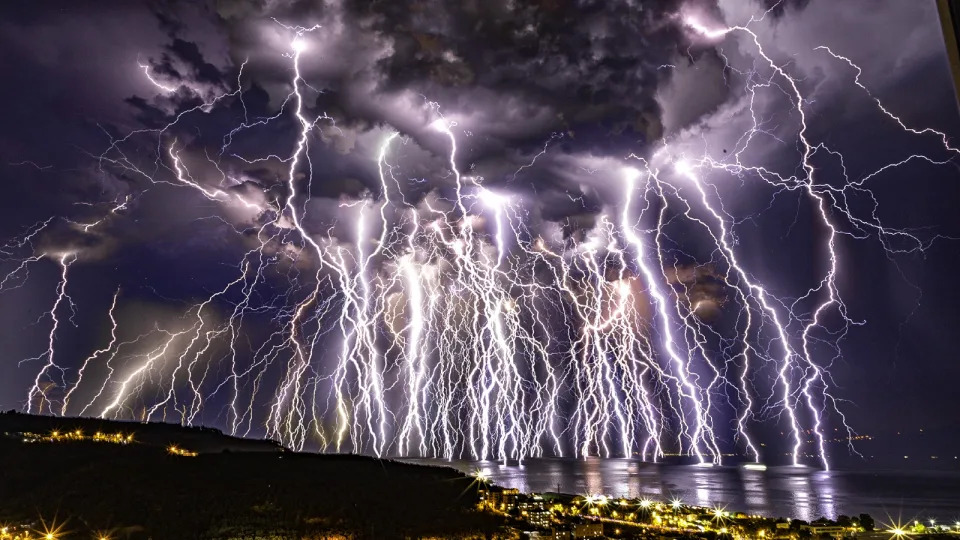Harry Baker
Tue, June 20, 2023

Hundreds of lightning bolts illuminate the night sky during thunderstorm
A photographer has captured a striking time-lapse photo of more than 100 individual lightning bolts during a fierce thunderstorm in Turkey.
Astrophotographer Uğur İkizler created the electrifying image by combining shots of the sky near his home in the coastal town of Mudanya. The individual images were collected over a 50-minute period around midnight on June 16 — meaning that, on average, there was a lightning strike every 30 seconds.
"Each and every one of them is beautiful, but when I combined all the lightning bolts into a single frame, it was a frightening sight," İkizler told Live Science in an email. The thunderstorm was a "magnificent visual feast," he added.
At least three different types of lightning are visible in the image — cloud-to-cloud, where the bolt begins and ends in the clouds; cloud-to-ground, where the bolt hits the ground; and cloud-to-water, where the bolts hit the water instead of land, according to Spaceweather.com.
Related: What's the longest lightning bolt ever recorded?
It is not uncommon for there to be so many lightning strikes during a single thunderstorm. Globally, there are 1.4 billion lightning strikes every year, or around 3 million every day. That works out as 44 lightning bolts every second, according to the U.K. Met Office.
RELATED STORIES
—Never-before-seen 'crystal-like matter' hidden in a chunk of fossilized lightning is probably a brand new mineral
—'Gigantic jet' that shot into space may be the most powerful lightning bolt ever detected
—Powerful laser blast used to control lightning for the first time
Each individual bolt likely has a voltage somewhere between 100 million and 1 billion volts, as well as billions of amps in current. This much energy can raise the temperature of the surrounding air by between 18,000 degrees Fahrenheit (10,000 degrees Celsius) and 60,000 F (33,000 C), according to the National Atmospheric and Oceanic Administration (NOAA). (For context, the sun's surface only reaches 10,000 F (5,500 C), according to Live Science's sister site Space.com.)
The new image shows off the iconic zigzag shape of lightning bolts. Researchers are not exactly sure what causes these crooked shapes, but a 2022 study suggested that the characteristic patterns are caused by a highly conductive form of oxygen that builds up irregularly as the bolt travels toward the ground.
No comments:
Post a Comment